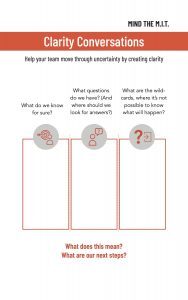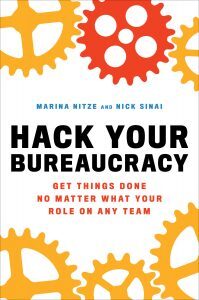David Dye's Blog, page 43
October 21, 2022
What Do You Want?
Do you ever feel, out of control, off balance, or reactive when you’re trying to get the results you want, but it’s just not happening for you? Often the difference between confusion and clarity is simply to change focus from what you don’t want to what you do want.
What Do You Want
Hey, it’s David, and you’re listening to leadership without losing your soul. Your source for practical leadership, inspiration, tools, and strategies you can use to achieve transformational results without sacrificing your humanity or your mind in the process.
Today I want to share a story with you that comes out of Tomorrow Together: Essays of Hope, Healing Humanity, and one that I learned many, many years ago that I think might help you. You know, there’s a fine line between wisdom and knowledge and confusion and clarity, and there’s a story that a mentor of mine told me when I was a child that really brought that home for me.
Miles Kingdom has this great quote I love. He says, “Knowledge is knowing that a tomato is a fruit. Wisdom is not putting it in a fruit salad.”
So the story goes, two boys were walking home after heavy rain. They just received new shoes before they left home. Their mother gave them very strict instructions not to ruin their new shoes in the water and mud. Both boys tried very hard to do what their mother asked, but when they arrived home, one boy’s shoes were muddy and soaking wet while the other boy’s shoes were dry. Naturally, mom questioned her sons. How did they manage to both walk the same route, both take her instructions seriously and yet arrive home with such different results? The brother with the wet shoes answered, I don’t know, mom, I tried to avoid all the puddles. The brother with the dry shoes answered. I looked for dry places and I put my feet there.
I imagine those two boys, one of them jumping back and forth, reacting to every puddle, trying to avoid them, but splashing in the edges despite his best efforts, while his brother calmly ignored the puddles and stepped only on the dry patches of the sidewalk. It’s a story that I have recalled many times in my life. When I am most reactive and out of balance, it’s usually because I’m focused on avoiding what I don’t want, but I haven’t clarified what I do want. Often the difference between confusion and clarity is simply to shift focus from what you don’t want to what you do want. It’s the difference between I don’t want to get my feet wet versus I want to keep my feet dry. Each of those desires creates very different activities. So what is it that you want?
The post What Do You Want? appeared first on Let's Grow Leaders.
October 17, 2022
12 Powerful Phrases to Help You Navigate Challenging Workplace Conflict
with a few “Go-To” Conversation Starters
Have you ever felt this way? You’re in the middle of a challenging workplace conflict, and you’re at a complete loss for words.
You’re mad. They’re mad. Maybe you even say something you can’t take back. And then in the middle of the night, the perfect words come to you. The “wish I’d said” regrets can run deep.
It’s impossible to prepare for every workplace conflict. And, you can’t script influence. But it can be remarkably useful to prepare for inevitable workplace disagreements by considering what you might say before you need to say it.
Today we share a few go-to power phrases to help you navigate challenging workplace conflicts. Use these words, and others like them to foster connection, create clarity, show up a bit more curious, and move the conversation toward resolution.
We mean these phrases to be thought-provoking prompts, not a script. Use them as a starting point to inspire the right words that feel natural and authentic to you.
12 Powerful Phrases to Help You Deal With Workplace ConflictPowerful phrases to foster connectionOne of the best approaches to dealing with workplace conflict is to connect at a human level. Depersonalize the conflict by personalizing the conversation. Here are a few to get you started.

Of course, this one requires sincerity. If your past behavior makes this statement questionable, you’ll want to supplement this one with a sincere apology as you state your intent for your future relationship.
2. Let’s pause this conversation for a moment, and come back in (an hour, a few hours, tomorrow) and talk about this.When you’re in the heat of a workplace conflict, it’s hard to find the right words. Taking a minute to pause gives you both a chance to regroup and consider the bigger picture, the desired outcomes, and how to approach the conversation more productively.
3. It sounds like you’re feeling _____ is that right? [pause for affirmation]. Thank you for letting me know how you feel.Checking in with the other person to validate their feelings can help deescalate a conflict at any point in the conversation.
When you “reflect to connect” you’re not agreeing with what they’ve said or that you agree with their emotion. Rather, you acknowledge how they feel. You see them. When you reflect, you are checking for understanding and creating a common starting place for the conversation.
When they know you’ve seen and heard them, it diffuses some of the emotional intensity and builds a connection that allows you to move to constructive next steps.
For example: “It sounds like you’re really frustrated with the lack of response from marketing and that’s sapping your motivation. Do I have that right?”
Powerful phrases to create clarityMost conflict at work (or anywhere else) comes from an expectation violation. Some of the most powerful phrases you can use in any conflict are those that lead to greater clarity.

You may or may not agree on what success looks like, but gaining clarity around expectations can save a lot of time and wasted energy. If it turns out you both want the same thing, you can shift to a “how can we” conversation. “Great, it sounds like we both want something similar. So how can we make that happen?”
At the very least, this powerful question gives you insights into what the other person needs, and then of course opens the door for you to share your definition of success as well.
5. Let’s start with what we agree on.When you’re in the middle of a workplace conflict, it’s easy to overlook the common ground. It’s likely you share some common perspective to build on. Taking a few minutes to know what you agree on can help reduce stress and create a more collaborative tone for the work ahead.
6. What I’m hearing you say is __________. Am I interpreting that correctly?Similar to number three where you reflect their emotion, this is a check for understanding to show that you’re actively listening, interested in, and truly understand the other person’s point of view. This powerful phrase is gold when working through workplace conflict because it also helps clear up misinterpretations and misunderstandings.
Powerful phrases to show up curiousOne of the fastest ways to get to the root cause of a workplace conflict is to show up genuinely curious about what the situation looks like from the other person’s point of view. As with all of these power phrases your positive intent matters, as does your tone and facial expression.
Your genuine curiosity will help people feel seen, and similar to the clarity power phrases, can give you a deeper sense of expectations and desired outcomes.

The beauty of this workplace conflict power phrase is that it can be useful at almost any point in the conversation. Variations include, “What’s your take on this situation?” “I’d love to hear your point of view on this.”
Of course, once you listen to their perspective, you set the stage to share yours.
8. What do you suggest we do next?This power phrase can be so useful to move the conversation from complaining or handwringing to tangible next steps, and it sets you up to share your ideas as well.
9. What can I do to support you right now?One of the fastest ways to de-escalate an emotional conversation is to show up with genuine curiosity about how you might help. This question pairs with the connection questions listed above.
Powerful phrases to close the conversationOne of the most frustrating aspects of workplace conflict conversations is that it seems like they’ll never end. One of the best ways to have more influence and impact is with words that move you from discussion to action.

You might not have resolved all the issues, but steering the conversation to one specific next step helps create forward momentum. Asking for just one action will usually feel doable. And if one step feels easy, you can always say “Great, what else do you think we could do?”
11. So, to recap our conversation, we’ve agreed to _________. Is that your understanding?As you can see, we’re big believers in the “check for understanding” throughout the conversation. It’s particularly important when recapping a workplace conflict conversation. The more emotionally intense the conversation, the more critical this final step is. If you leave the discussion with different expectations, you’ll have continued conflict and hurt feelings.
12. Let’s schedule some time to talk about this again, and see how our solution is working.If you’ve ever been in one of our leadership training programs, you’ll recognize this as “scheduling the finish,”
One of the big sources of workplace conflict is when you think you’ve resolved it, and everything doesn’t go the way you planned. Scheduling time to talk about the situation again makes the follow-up conversation more natural, because you’ve already agreed to it. A scheduled followup increases the odds that you’ll both keep your commitments to one another. And, it gives you a built-in opportunity to discuss the inevitable disruptions to your plan.
Your TurnWorkplace conflict is never easy, but often quite necessary and valuable in high-performing teams. Being able to surface and navigate workplace conflict is one of the most important skill sets for every team member to master. These powerful phrases can serve as a useful starting point. We encourage you to refine them and make them your own.
We’d love to hear from you: What would you add? What are your favorite go-to phrases for navigating workplace conflict?
See Also: Team Conflict: How to Surface and Discuss Simmering Issues (Video)
How to Say No at Work: Powerful Phrases to Stand Your Ground
The post 12 Powerful Phrases to Help You Navigate Challenging Workplace Conflict appeared first on Let's Grow Leaders.
October 16, 2022
How to Help Your Team Gain Clarity During Serious Uncertainty [VIDEO]
When So Much is Unknown
When you’re dealing with uncertainty and change, it’s easy to feel like EVERYTHING is uncertain, but that’s seldom true. Help your team differentiate what they know from what they don’t, and empower them to focus on tactical, practical next steps. Today’s Asking for a Friend will help your team gain clarity in uncertainty.
And don’t miss the other episodes in this special Asking for a Friend Courage Challenge filmed in Switzerland (scroll down for more)

 Invite your team to consider, “what do we know for sure.”And then consider what questions we have (and where can we find the answers).And then, give them a chance to consider the wild cards.
Invite your team to consider, “what do we know for sure.”And then consider what questions we have (and where can we find the answers).And then, give them a chance to consider the wild cards.After talking through each of these questions, you can then focus the conversation on meaningful next steps to take action and build contingency plans.
For a robust look at creating clarity, you won’t want to miss this article.
More of the 5-Day Asking for a Friend Courage Challenge
This Asking for a Friend to help your team gain more clarity is part 2 of a 5-day special Courage Challenge from Switzerland. You can click on the images below to participate in the entire Courage Challenge.
Challenge 2: (you are here, see above)
Day 3: How to Help a Team Member Position Their Wild Idea (That Just Might Work)
Challenge 4: Avoid These Common Communication Mistakes for More Influence
Day 5: What’s at Stake if You Don’t Speak Up?
The post How to Help Your Team Gain Clarity During Serious Uncertainty [VIDEO] appeared first on Let's Grow Leaders.
October 13, 2022
Leadership and Selling Your Expertise with Robert Chen
What is the secret to ongoing success in every role whether you’re in leadership, accounting, consulting, investment banking, law, or any other type of professional service? It’s not just knowledge, experience, and unique services that set people apart. Success is achieved by adopting the mindset, mastering the strategies, and employing the tactics at the heart of rainmaking – selling your expertise.
In this episode veteran communications, sales, and leadership consultant Robert Chen provides a practical guide to selling knowledge-based services in a market that demands credibility and subject-matter authority. Chen and his colleagues at Exec|Comm have helped hundreds of thousands of professionals learn to sell, influence, and negotiate more effectively. Tap into the tools we discuss to improve your influence, sales and overall perspective on selling your expertise.
Leadership and Selling Your Expertise
09:09 Why technical expertise alone won’t help you get ahead and have the career success that you want.
13:32 A big part of effective leadership is to position yourself as a true partner.
14:57 Getting other people to recognize the value that you see and how it adds value to the broader organization.
16:27 What are some recommendations to begin this process of selling our expertise by getting into an effective mindset?
19:13 Checking your mindset through your language and patterns.
21:59 Why getting out of our own head and focusing on our prospects and clients is so critical for successful influence.
29:26 Effective leadership and expertise makes a shift from seeing your prospects or functions as the building block to your success to seeing yourself as the building block for their success.
31:47 The three scenarios that are most common when it comes to sales.
40:37 The power in referrals and different ways they come along.
45:40 The underlying principle of networking is selling, or getting other people to want to learn about the expertise you bring?
49:18 The ART of negotiation.51:17 Taking care of people is good business and make sure that you are always focused on creating that positive experience all around.
Connect with RobertGet the Book
The post Leadership and Selling Your Expertise with Robert Chen appeared first on Let's Grow Leaders.
October 10, 2022
How to Leverage Your Skills with the Most Valuable Leadership Practice
At the start of our work together, we’ll ask leaders and managers around the world for their most valuable leadership practice. There are several answers that consistently rise to the top, including clarity, vision, encouragement, communication, listening, empathy, and support.
These are certainly valuable. And when we ask the tens of thousands of leaders and managers we’ve worked with about the most valuable practice they’ve learned through our work together, one of the most frequent answers is to “Check for Understanding.”
But What’s the MOST Valuable Leadership Practice?Check For Understanding: Ensure that everyone in a conversation is on the same page and has a shared understanding of what they discussed to save hours, days, and weeks of headache, heartache, and frustration. (For more on the valuable communication tool: look at Check for Understanding)
I love the “check for understanding” and I do think it’s one of the highest ROI practices you can use…
But, if I had to choose one practice that adds the most value and leverages everything else you do as a leader, I would choose a word that lacks glamor. It’s not flashy or charismatic. But it will be the deciding factor in your long-term success.
What’s the most valuable leadership practice?
Consistency.
Showing up moment by moment, day after day, project after project with the same skills, character, and commitment.
Why Consistency?I’m training for my first ultra-marathon of about 33 miles over hilly trails.
You can’t train for a race like this in a day or a week. It takes months of consistent training including running, strength work, and stretching for your body to adapt and grow to meet the new demands.

Me consistently wondering how I’m going to finish this 17-mile training run
Your team and organization are similar. Day-to-day consistency and accountability in a few practices will do far more good than multiple pronouncements and intentions.
Just like the body adapts to physical training, your team will adapt to practicing good communication when you practice it daily, bring one another back to focus when you forget, and celebrate success.
Then do it again the next day.
The same is true for any meaningful team behavior or leadership skill. Your team needs your encouragement consistently. To hold one another accountable every day. They need clarity of outcomes and priorities all the time.
Why Consistency is Rare and ValuableYou’re probably nodding and saying “Yes, yes, consistency – I get it.”
But consistency is valuable and multiplies every other leadership practice because it is so rare. It’s easy to encourage your team when you’re excited, results are fantastic, and everyone feels good.
It’s more challenging when you’re distracted, stressed, overwhelmed, or bored. Inconsistency undermines any good intention you share or initiative you begin. But showing up consistently builds trust.
That’s why we recommend developing a habit of using one leadership skill before adding the next.
(It’s also why meaningful leadership development programs combine spaced learning over time with action learning—where participants apply what they learn.)
The Most Valuable Leadership Practice – Your TurnConsistency isn’t flashy. There’s no hack or trick to it. But showing up repeatedly, and doing what works, will build trust, strength in your team, positive habits, and success.
So yes, commit to checking for understanding, scheduling the finish, investing in development conversations…
And commit to the most valuable leadership practice: consistency in your chosen skills. It makes all the difference.
I’d love to hear from you: How do you maintain consistency in the practices that matter most for your success?
The post How to Leverage Your Skills with the Most Valuable Leadership Practice appeared first on Let's Grow Leaders.
October 7, 2022
Leading in Complexity and Uncertainty with Anu Rathninde
Your organization is a Complex Adaptive System—and so are the people you lead. Many leaders expect an organization to operate like a machine, but that leads to failure. Complexity and uncertainty mean unpredictable business outcomes, yet decisions are made based on assumptions of certainty that don’t include the interdependence and emergence of your employees, customers, supply chain, and eventually, success.
In this episode, Anu Rathninde, president of Aptiv Electrical Distribution Systems-Asia Pacific, shares his practical strategy for tackling complexity in the Knowledge Era. Bridging ancient Asian wisdom and modern science, this guide leverages the best leadership philosophies with the right mindset to help you tackle complexity, manage yourself as you manage others, and transform your organization by putting people, decisions, and interactions first. Learn how to make complexity an advantage and how to embrace it.
Leading in Complexity and Uncertainty04:46 What is the difference between complex and complicated?
09:16 How complicated things can be fixed and often have something like a user manual, and complex systems have no user manual.
19:44 We have a fundamental responsibility as human beings to manage ourselves so that we don’t do damage to our society and humanity.
19:50 Combining the fundamental humanity of eastern learning with the science, and methodologies of the western side of learning.21:14 Complexity is the reality. What is the approach recommended for leaders to take?
24:19 Organizations have a mindset, and underneath that mindset is the leadership.
34:19 What are the internal motivations that drive healthy, productive leaders who can address complexity and show up every day to do that?
43:43 The five elements in this approach to complexity.
43:50 Why every other leadership skill will become obsolete over time except learning.
48:07 There’s no perfect organization and no matter which way we organize every value creation job is done cross-functionally.
Get the Book
Connect with Anu
The post Leading in Complexity and Uncertainty with Anu Rathninde appeared first on Let's Grow Leaders.
October 3, 2022
When Leading Through Change, Inspect What You Expect (With Curiosity and Compassion)
When you’re leading change, it takes more than a strong plan, implemented well to succeed. It’s also vital to inspect that the actions and behaviors you THINK matter most are having the IMPACT you expect.
Everyone’s On Board, and We’re Still Struggling!Steve, the CEO of an energy company, had thrown every ounce of energy into launching their new strategic product.
He was counting on this game-changing offering to help their company be stickier to customers in an increasingly commoditized industry. He also hoped it would attract new customers away from their competitors.
Steve had done so many things right to create clarity. He ensured employees at every level understood WHY the new product was so mission-critical to their long-term future.
His 5×5 communication strategy was more like 30×30. Everyone in every corner of the company knew the goals and their specific mission-critical behaviors to achieve them.
Steve had dedicated leaders whom he trusted leading through change nearly full-time. He had committed significant financial resources to see it through. People cared. They were working hard on bringing the product to market. They knew what they were supposed to do, and they were doing it.
But the program struggled to gain traction.
As Steve told it:I was getting so frustrated about the lack of sales, I had reinforced why this was so important so many times, I was sick of hearing myself talk about it.
But the service reps were struggling to convert inquiries to sales. Then one day, I went into the contact center and took a few customers’ calls myself. The questions were tough.
I realized our new program was difficult to explain and our training had not prepared our reps to take those calls.
It occurred to me that no amount of explaining WHY this program mattered would help until or reps had the information to answer our customers’ questions. No marketing campaign or incentives matter if our reps were stumped by the calls they were receiving.
When I got closer to what was happening, I realized we not only had a gap in our training but there were also a few policies and procedures we hadn’t quite figured out.
When you’re looking to make a significant change, it takes more than clearly communicating what’s important and tight action plans to make it happen. It’s vital to show up curious to ensure the behaviors have the desired impact.
In this case, the reps could explain the value proposition with excitement and had learned to eloquently bridge to the sale in common inbound calls. But they couldn’t answer the deeper logistics questions that mattered most to prospective buyers.
When Leading Through Change: Schedule the “Show”In our book Courageous Cultures, we call this “scheduling the show.” Scheduling the show means making a deliberate plan to inspect the behaviors you assume should be happening AND that those behaviors are having the impact you anticipate.
You can schedule a site visit, a skip-level meeting, or, like Steve, you can dive in and participate alongside your team.
The leaders who do this best master the art of the old Russian proverb made famous by Ronald Reagan and now repeated in conference rooms around the world: “Trust, but verify.”
To truly understand the support his team needed, Steve had to experience the initiative from the frontline and hear from customers.
And here’s what else he learned.
His frontline employees were much more interested in hearing his sales ideas when they knew that he knew how hard it was—and that he was vulnerable enough to admit it. In companies where the Show phase breaks down, we often hear complaints that “leaders just don’t get it.”
They stay away from the action. They count on frontline managers to inspect and raise issues, many of who lack the confidence or competence to do that well (see also Share Your Ideas: Practical Ways to Ensure Your Voice is Heard).
Leading Change: 5 Ways To Inspect What You ExpectWhen leading change it’s tempting to focus more on clarity than curiosity- telling people what needs to happen and why. It’s also important to show up curious to understand what’s happening and why.
When I (Karin) was leading the store channel at Verizon, I found that one of the best ways to learn how to position our products to customers was to spend time on the floor talking to customers.
And there was a direct correlation between how well my managers could talk about our products and the sales results of their teams.
My team and I often learned that there were gaps in the training or nuances we could add that made our products easier to understand and more appealing when we rolled up our sleeves and practiced ourselves.
2. Invite your team to show you their approachWe know, most people cringe when they hear the words “role play.”
But do you know what works well to help fine-tune behavior? Role play.
When you’re leading change, one of the best ways to build momentum is to have your team practice and show you and one another the behaviors you’re looking to engrain.
3 . Hold regular skip-level meetings and leadership visits.Leadership visits and skip-level meetings are a great way to check for understanding to ensure people understand what’s important and that they know what to do at a behavioral level.
And, as Steve learned, it’s helpful to show up curious about the impact. Do the behaviors you’ve encouraged and trained have the results you desired?
Make it easy for your team to give you bad news and tell you what’s not working.
4. Teach your team to ask courageous questions of one anotherOf course, in a courageous culture, it’s not just the leader “inspecting” what they expect, it’s everyone, coming to work asking “is this working?” “Is there a way we could do this better?”
One simple technique we teach in our team innovation programs is the art of Courageous Questions.
Courageous questions are specific and humble.
What’s one policy that really annoys our customers?If you could make one change to improve the customer experience, what would that be?When customers call, what’s their number one complaint?What is the most important action we take to delight our customers? How would you recommend we do that more consistently?5. Acknowledge the DifficultyOne of the biggest frustrations we hear from employees when it comes to large-scale change is that their boss doesn’t “get how hard this is.” Change doesn’t happen in a vacuum.
It could be that the new behavior your expecting the team to embrace isn’t actually that difficult. But what IS hard is making the change on top of the twenty-seven other tasks they’re trying to manage, along with customer escalations and team members out with Covid.
Your team wants to know that you understand all they’re juggling. Give them an opportunity to show you that too. And of course, thank them for their efforts.
When leading change efforts, curiosity is key. Show up confident and clear about what’s most important, and curious about how it’s really going. Stay involved and model the way.
Your turn.What are your best practices for leading through change and inspecting what you expect?

The post When Leading Through Change, Inspect What You Expect (With Curiosity and Compassion) appeared first on Let's Grow Leaders.
September 30, 2022
Get Things Done in a Bureaucracy with Marina Nitze & Nick Sinai
Do you feel like you’re jumping through hoops to get things done? From local government to the White House, Harvard to the world of venture capital, Marina Nitze and Nick Sinai have taken on some of the world’s most challenging bureaucracies—and won. In this episode, they bring their years of experience to you, teaching you strategies anyone can use to improve your organization through their own stories and those of fellow bureaucracy hackers.
Change doesn’t happen just because the person in charge declares it should. Regardless of your industry, role, or team, learn how to get started, take the initiative on your own, and transform your ideas into impact. Don’t miss this episode and the incredible hope (and wisdom) Marina and Nick share!
Get Things Done in a Bureaucracy00:05 You’re going to have critics – and that’s okay. You don’t need everyone on your side. But you still want a good relationship with them.
07:05 What do you mean by bureaucracy? (And why you likely DO work in one.)
13:19 Know your organization’s “guilds” and build relationships across them
16:31 Why the real work happens outside of the meeting and strategies to use around helping get decisions made.
19:00 Spend time with your critics and how to prepare for them in your meetings
24:25 What recommendations do you have for the mindset and mental-emotional approach to this kind of work?
29:35 Find your paper clip – how you can help people, build influence, and make a difference from right where you are.
32:25 Where are there steps that we could eliminate entirely or we could change to make employees’ lives better, which increases employee satisfaction and retention?
35:46 How to look between the silos of larger organizations.
38:06 What are the incentives (especially the invisible ones) in your organization and how do they affect the people you want to influence?
Connect with Marina and NickGet the Book
The post Get Things Done in a Bureaucracy with Marina Nitze & Nick Sinai appeared first on Let's Grow Leaders.
September 26, 2022
How to Overcome Negative Perceptions for a Better Leadership Brand
Have you ever felt like this? You’ve worked hard to build your leadership brand, but the negative perceptions linger.
You’ve been “all in” to PROVE and IMPROVE yourself as a competent, human-centered leader, but no one can get past the stories… that one time (okay maybe seven times) you lost your cool, stole credit for an idea, or were _________ (insert your frustrating, old reputation here).
You can improve your reputation and your leadership brand with this proactive approach.
What is a leadership brand?Put simply, your leadership brand is how others would describe you in one sentence.
Imagine a meme or a billboard on the highway describing your leadership. What would it say?
And most importantly, what if that sentence had to include a “But”…
“She’s a really great person and I love having her on my team, BUT I can’t count on her to meet her commitments.”“He’s the best sales guy we have BUT he’s a complete jerk with his internal partners.”“She’s smart BUT lacks the confidence to perform at that level.”“They have great ideas, BUT lack executive presence.”When managing your leadership brand, the “buts” matter. If the hard work you’ve done on your “but” isn’t paying off, it might be time to address these perceptions.
7 Steps to Start Changing PerceptionsDefine your aspirational brandAsk courageous questions to understand perceptionsLet others know what you’re working on and whyStay consistent and ask for helpBe interested and generousAdmit when you screw upDon’t give up1. Define your aspirational leadership brandJust like with anything else you want to achieve, it’s essential to define what success looks like.
Complete this sentence: “I want to be known for _________. Or, I want to be remembered as a leader who ________.”
For example, we want to be known for practical, sustainable leadership development for human-centered leaders.
Everything we choose to do (or not do) works to enhance or diminish our desired leadership brand. What we want on our “billboard” influences the clients we choose to work with and the commitments we make; the books and articles we write (and read); the guests we invite to our shows; and how we design every leadership development program and keynote speech.
An important part of this aspirational brand exercise is considering what matters in your current culture. Consider the characteristics of the brand you’re building as they relate to the leadership characteristics that are valued and encouraged where you work.
For example, if your aspirational brand is “accountability and results,” and you work in a high-clarity culture with strong expectations and clearly defined goals, that’s a fantastic fit. There’s alignment between how you want to show up and what the culture values.
In contrast, if your leadership brand is “empowering and developing people,” and you work in a churn-and-burn culture, where “no one has time for that stuff,” you’ll have more of a culture-fit issue, than a brand problem.
Next, identify strengths you can build on to enhance the reputation you want. Then look at your biggest opportunities for growth as you build your aspirational leadership brand.
2. Ask courageous questions to understand perceptionsOnce you know how you want to show up, the next step is to ask people for their honest perceptions of your leadership brand.
If you’ve got a big but, it’s better to know.
It’s helpful to ask these specific, humble courageous questions in pairs… one strength to build on, and one opportunity to improve. For example,
What’s one behavior that you think helps my success as a leader? And, what’s one that undermines my success?What is one way my current leadership style positively impacts the team? And, what’s one way my current leadership style gets in the way?3. Let others know what you’re working on and whyIt takes time to change perceptions. If you let people know what you’re working on and why it matters, they’re more likely to notice your change in behavior.
Here’s a quick (90-second) excerpt from our interview with Marshall Goldsmith, world-renowned executive coach and author/editor of forty leadership books. You can also watch a longer version here.
He explains how people see our behavior in a way that’s consistent with their previous experience of you, and they look for behavior to reinforce that image. When you let people know you are working on a change, you set them up to better see it.
4. Stay consistent and ask for helpAn additional benefit of letting people know you’re working on a behavior change (even if you think you’ve already changed it), is that you can ask for help.
You might say, “I’d really appreciate you looking out for when I do __________. Can you please notice when you see me doing this well, or struggling with it?”
5. Be interested and generousOne big mistake that can damage your leadership brand is to appear too needy or overly focused on your own career. It’s good to ask for help – and it’s equally vital to show up interested and generous to support them.
Avoid “I’ll help you if you help me,” approaches.
Being known as a genuinely interested, supportive leader who cares about others and shows up consistently helpful will help your leadership brand, and build trust while you work on the other aspects of your leadership and reputation.
In our leadership brand workshops, we call this “land in the and:” Be an interesting expert AND an interested connector.
6. Admit when you screw up“I’m sorry, I really screwed this up,” are powerful words when working to build trust. Don’t hide it or pretend the slip didn’t happen. Your team already knows when you make a mistake or slip back into an undesired behavior.
A quick, sincere apology goes a long way in building your trusted leadership brand.
See Also: How to Give Your Boss Bad News.
7. Don’t give upChanging negative perceptions take time. Stay focused on consistently doing the right thing. Even if you can’t turn around your damaged reputation in your current situation, the investment in your leadership brand will serve you well, no matter what you do next.
Related Articles on Managing Your Leadership BrandExecutive Presence in a Virtual World: What Matters Now
Managerial Courage: 7 Practical Ways to Be a Bit More Daring
Your turn.
What advice do you have for someone looking to overcome an outdated reputation or negative leadership brand?
The post How to Overcome Negative Perceptions for a Better Leadership Brand appeared first on Let's Grow Leaders.
September 25, 2022
New Manager? Practical Advice for Human Centered Leaders
(An Asking for a Friend Interview with Bill Treasurer)
Karin, I’m new to leadership. And, I really want to come off strong as a new manager. What recommendations do you have for starting off strong?” #askingforafriend
Well, you know I have lots of thoughts on this one..start with confidence AND humility and focus on results AND relationships.
Stay focused on the MIT (the most important thing), communicate consistently with 5×5 communication, and be sure to check for understanding. AND, schedule the finish.
And today, I’ve invited my friend, and kindred spirit in human-centered, courageous leadership, Bill Treasurer to expand the conversation with insights from his new book, Leadership Two Words at a Time.
A few of Bill’s Two-word insights for a New Manager

Bill’s book is dived into three sections: leading yourself, leading others, and leading work. And then he provides practical advice two words at a time.
1. Two Words for Leading Yourself: Know Thyself
I love his idea of imagining there are 5 values flags marching ahead of you in every situation 1:16).
2. Two Words for Leading Others: Invite Challenge
2:19….I particularly like Bill’s thoughts on teaching your team how to dissent, so when they do it, they are following through on what they asked you to do… creating psychological safety.
3. Two Words for Leading Work: Make Money
You won’t want to miss our conversation on RTFCA at 3:51
Your turn.
What are TWO OF YOUR favorite words of advice for a new manager?
See Also:The post New Manager? Practical Advice for Human Centered Leaders appeared first on Let's Grow Leaders.












